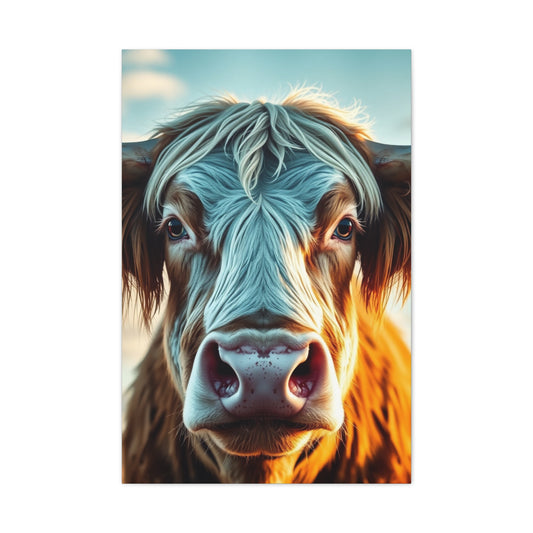High Dynamic Range imaging represents one of the most transformative techniques in contemporary digital photography, offering photographers unprecedented control over challenging lighting scenarios. This comprehensive exploration delves into the intricate world of HDR methodology, providing both novice and experienced practitioners with essential knowledge to master this powerful photographic approach.
During a memorable expedition through the majestic Rocky Mountains, an extraordinary sunset captivated my attention with its breathtaking beauty. The scene was so mesmerizing that I paused momentarily in pure admiration before retrieving my camera to capture this magnificent display. However, my initial attempt revealed a fundamental challenge that many photographers encounter - the enormous contrast between the luminous sky and the shadowed mountain terrain proved too extreme for my camera's sensor capabilities. The resulting image was disappointing, with the sky appearing reasonably exposed while the mountains remained completely obscured in darkness.
With only my camera and reliable tripod at my disposal, I recognized the limited options available. This situation prompted me to experiment with High Dynamic Range techniques, ultimately producing a dramatically improved result that showcased both the celestial beauty and terrestrial details in harmonious balance.
The perception of HDR imagery often generates polarized reactions among viewers. Some individuals appreciate the enhanced visual impact and expanded tonal range, while others find the distinctive aesthetic overwhelming or artificial. This divergent response reflects the broader debate surrounding HDR applications in contemporary photography, where technique execution significantly influences final outcomes.
Understanding Dynamic Range Limitations in Digital Photography
A fundamental principle every photographer must comprehend involves the inherent limitations of digital sensors compared to human visual perception. Our eyes possess remarkably sophisticated biological mechanisms that enable simultaneous appreciation of both brilliant highlights and subtle shadow details across an extraordinary tonal spectrum. This natural capability far exceeds the technical specifications of any manufactured electronic imaging device, regardless of its sophistication or cost.
The term "dynamic range" in photographic contexts refers to the measurable difference between the darkest and brightest elements that a sensor can accurately record in a single exposure. This specification has become increasingly important in modern camera evaluations, with manufacturers continuously striving to expand their sensors' dynamic range capabilities to approach the versatility of human vision.
Experienced photographers frequently encounter situations where their equipment cannot adequately capture the complete tonal range visible to the naked eye. Despite perfect vision allowing clear perception of all scene elements, camera sensors struggle with extreme lighting contrasts, forcing compromises in exposure decisions. Manual adjustments might improve one area while simultaneously degrading another, creating an ongoing challenge in achieving optimal results across the entire frame.
Consider the practical demonstration of this limitation through comparative exposures of the same scenic vista. When optimizing exposure for proper sky rendition, the foreground elements become severely underexposed, losing all recoverable detail in the shadows. Conversely, exposing for foreground elements results in completely overexposed skies with no recoverable highlight information. Even advanced full-frame sensors with impressive specifications cannot overcome such extreme dynamic range challenges through single exposure techniques.
Fundamental Principles of HDR Methodology
High Dynamic Range (HDR) photography has emerged as a transformative post-processing technique designed to overcome inherent limitations of digital sensors. In scenes with extreme contrast—where brilliant highlights coexist with deep shadows—traditional single exposures often fail to capture the full tonal spectrum perceived by the human eye. HDR methodology addresses this shortcoming by intelligently blending multiple exposures into a single, cohesive image that offers a more accurate and expressive representation of the original scene.
Unlike human vision, which effortlessly adapts to varied lighting conditions through dynamic pupil adjustment and neural processing, camera sensors possess a restricted dynamic range. This constraint leads to blown-out highlights or crushed shadows in high-contrast scenes such as sunsets, interiors with bright windows, or dramatic landscapes under dynamic weather. HDR techniques expand tonal depth, allowing photographers to produce images with nuanced lighting, subtle gradations, and enhanced visual realism.
As digital imaging technology progresses, HDR has evolved from a niche solution into a versatile creative and corrective tool used across numerous photographic genres. From architectural documentation to nature photography and commercial real estate imagery, HDR provides a reliable pathway to achieving well-balanced exposures without sacrificing detail in critical areas.
Understanding Exposure Bracketing and Tonal Distribution
The cornerstone of effective HDR imaging lies in exposure bracketing—the deliberate capture of multiple exposures at different shutter speeds while maintaining consistent aperture and ISO values. Each exposure in the bracketed sequence serves a specific purpose: the underexposed frame retains highlight detail, the overexposed image recovers shadow information, and the midrange shot provides balanced tones for integration.
This methodology functions on the premise that no single exposure can encompass the entire dynamic range present in many real-world scenes. By combining several exposures, photographers are able to extract and preserve minute details across the luminance spectrum, from brilliant skies to shadowed corners. This process results in a final image that surpasses the limitations of individual sensor captures.
Precision in exposure spacing is critical. Common bracketing sequences involve intervals of 1 or 2 stops, typically in three, five, or seven-image bursts. More exposures may be used in extreme lighting conditions, ensuring comprehensive tonal coverage. Automation tools within modern cameras simplify this process, enabling consistent capture without manual adjustments between shots.
Alignment plays an equally vital role. Since bracketing involves multiple frames, slight shifts due to hand movement, subject motion, or environmental factors can introduce artifacts. Using a sturdy tripod and triggering the shutter remotely helps mitigate these issues. Many HDR software platforms also offer auto-alignment features to compensate for minor inconsistencies during the merging process.
The Role of HDR Software in Exposure Fusion
Once bracketed exposures are captured, specialized HDR software merges the sequence into a unified image using tone mapping and exposure fusion algorithms. These applications analyze each frame to determine the optimal areas for blending, assigning weight to different tonal regions based on user-defined preferences or intelligent automation.
Tone mapping refers to the process of compressing high dynamic range data into a displayable format suitable for screens or print. Since monitors and print media have limited dynamic range, tone mapping ensures that the final image retains visual richness without appearing flat or over-processed. This step is where much of the creative control is exercised, as photographers can choose between naturalistic rendering or more stylized interpretations.
Exposure fusion, in contrast, operates by selectively blending pixels from the bracketed images based on luminance values without generating a true HDR file. This method is preferred for images that demand realism, as it avoids some of the exaggerated contrasts and halos occasionally associated with aggressive tone mapping.
HDR software platforms often include robust tools for microcontrast adjustment, color grading, deghosting (to manage moving elements), and noise reduction. Mastery of these tools enables photographers to fine-tune their results, balancing artistic vision with technical precision.
Single RAW File HDR Processing and Its Limitations
While multiple exposures form the foundation of traditional HDR methodology, the advent of high-bit-depth RAW files has introduced an alternative approach: generating HDR-like images from a single exposure. This process involves extracting highlight and shadow detail from the extensive tonal data embedded within a single RAW file, particularly when captured at low ISO and optimal exposure settings.
This single-image technique offers practical advantages in dynamic environments where bracketing is impractical, such as scenes with fast-moving subjects or handheld street photography. By pulling data from both ends of the histogram, photographers can simulate the benefits of bracketed HDR without needing multiple captures.
However, this method comes with limitations. The effective dynamic range of a single RAW file, even from advanced sensors, remains narrower than that of a well-executed bracketed sequence. Extreme shadow lifting may introduce noise, while recovering blown highlights is often impossible if clipping occurred during capture. For best results, single-file HDR should be reserved for scenes where contrast is moderate and highlight preservation is prioritized during exposure.
Despite its constraints, single-file HDR processing provides a valuable fallback method and a streamlined workflow option, particularly for documentary photographers or mobile shooters seeking quick enhancement without complex processing pipelines.
Balancing Realism and Surrealism in HDR Aesthetics
One of the most debated aspects of HDR photography lies in its visual aesthetic. Early examples of HDR often featured overly saturated colors, unnatural textures, and extreme contrast, giving rise to a hyper-real or surreal appearance that polarized viewers. While some embraced this style as a new artistic form, others criticized it as artificial and gimmicky.
Today, HDR photography encompasses a broad spectrum of styles, ranging from subtle, naturalistic enhancements to bold, fantastical renderings. The key to successful HDR execution lies in intention. Photographers must decide whether their goal is to replicate human perception, emphasize dramatic lighting, or construct an alternative visual reality.
Natural HDR processing focuses on subtle tonal recovery, ensuring that highlight detail is retained, shadows are gently lifted, and midtones remain consistent. This style suits landscapes, architectural interiors, and portraiture where realism is paramount.
Conversely, stylized HDR allows for greater creative license. In fine art photography or conceptual projects, photographers may push contrast boundaries, amplify textures, or infuse color palettes with surreal intensity to evoke emotional responses.
Regardless of approach, restraint and craftsmanship are essential. Overprocessing can lead to halos around high-contrast edges, unnatural skin tones, and flat-looking images with no true black or white points. Attention to histogram distribution, white balance accuracy, and texture realism ensures that HDR serves the image, rather than overwhelming it.
Practical Applications of HDR Across Photographic Genres
HDR is not confined to any single photographic niche. Its methodology proves invaluable across a wide range of applications, each with its own challenges and benefits.
In landscape photography, HDR captures the full drama of sunrise or sunset scenes, where dynamic range often exceeds camera capabilities. With foregrounds in shadow and skies ablaze with light, HDR ensures that neither detail is sacrificed.
Architectural and real estate photographers use HDR to manage mixed lighting conditions—balancing exterior sunlight with interior artificial light. This technique reveals room details while maintaining accurate window exposures, producing visually balanced and commercially valuable results.
In travel photography, HDR enhances scenes with complex lighting, such as bustling markets, ancient ruins, or shadowed alleyways. The method allows for vibrant depictions of culturally rich environments without losing subtle ambiance.
HDR also has utility in product photography, astrophotography, and even macro photography, where lighting inconsistencies and reflective surfaces challenge standard exposure techniques.
Regardless of the genre, HDR becomes most effective when applied with subtlety, technical fluency, and a clear understanding of subject and setting. Successful HDR images inform, inspire, and invite the viewer into a fully realized visual experience.
Essential Gear and Workflow Considerations for HDR Success
While HDR can technically be performed with any modern digital camera, certain tools and workflow strategies enhance consistency and image quality. A reliable tripod is foundational for ensuring alignment between bracketed exposures, especially in low-light scenarios or high-resolution shooting.
Cameras with built-in bracketing features simplify capture, automating exposure shifts and reducing error. Mirrorless systems offer silent shooting, real-time exposure previews, and high dynamic range sensors ideal for HDR workflows.
Lens selection plays a vital role. Prime lenses with minimal chromatic aberration and high contrast yield cleaner results. Wide-angle lenses are favored for landscape HDR, while tilt-shift lenses may assist in architectural contexts.
Use of remote shutters or intervalometers reduces vibration during bracketing, preserving sharpness across frames. Graduated neutral density filters can also help balance sky and foreground exposure, reducing the required number of brackets in certain scenes.
In post-processing, a non-destructive workflow is essential. Software such as Adobe Lightroom, Capture One, or dedicated HDR applications provide tone curve controls, highlight recovery tools, and local adjustment brushes to refine the final image. Maintaining a RAW-based pipeline ensures maximum flexibility and archival quality.
Color calibration, backup strategies, and consistent file naming conventions help manage complex HDR projects, particularly when working with large volumes of bracketed images or multiple shooting sessions across diverse lighting conditions.
Essential Equipment and Software Requirements
Successful HDR photography demands specific tools and equipment to achieve professional-quality results. A digital camera capable of manual exposure control forms the foundation of any HDR setup, with digital single-lens reflex cameras offering optimal performance due to their advanced sensor technology and extensive control options.
A sturdy tripod represents perhaps the most critical accessory for multiple-exposure HDR work. While modern software includes alignment algorithms that can compensate for minor camera movement between shots, achieving the highest quality results requires absolute camera stability throughout the bracketing sequence. Hand-held bracketing, though possible, introduces alignment challenges and potential image quality degradation that tripod use eliminates.
Image processing software plays an equally important role in HDR workflow. Adobe Photoshop provides built-in HDR functionality suitable for basic applications, while specialized software like Photomatix Pro offers significantly more sophisticated tone mapping algorithms and creative control options. Professional HDR practitioners often prefer dedicated applications due to their superior processing capabilities and user-friendly interfaces designed specifically for HDR workflow optimization.
Additional software tools enhance the final image quality through noise reduction and sharpening applications. Programs like Nik's Dfine or Noise Ninja effectively address the increased noise levels often present in HDR images, while professional sharpening algorithms ensure optimal detail rendition without introducing artifacts.
Optimal Camera Configuration for HDR Capture
Achieving consistent, high-quality HDR results requires careful attention to camera settings and capture methodology. Recording images in RAW format provides maximum flexibility during post-processing, preserving the complete dynamic range captured by the sensor without the compression artifacts inherent in JPEG processing. RAW files contain significantly more tonal information than visible in standard preview displays, making them essential for extracting maximum detail from both highlight and shadow regions.
Aperture Priority mode offers the most practical exposure control method for HDR bracketing sequences. Maintaining consistent aperture settings across all exposures ensures uniform depth of field throughout the series, preventing focus-related inconsistencies that could compromise final image quality. Manual aperture control also provides predictable exposure relationships when varying shutter speeds for bracketing purposes.
Matrix metering (Nikon) or Evaluative metering (Canon) systems provide optimal starting points for determining base exposure values. These sophisticated metering patterns analyze the entire scene to establish appropriate middle exposures that serve as reference points for bracketing sequences. Most modern cameras include automatic exposure bracketing functions that streamline the capture process by automatically varying exposure values according to predetermined intervals.
Bracketing intervals depend on the total number of exposures planned for each sequence. Three-image brackets work effectively with two-stop intervals (-2, 0, +2 EV), while five-image sequences benefit from one-stop increments (-2, -1, 0, +1, +2 EV). These spacing recommendations provide adequate tonal separation while maintaining manageable processing complexity.
Environmental conditions significantly impact HDR capture success. Wind movement affects vegetation elements, creating alignment challenges that even sophisticated software cannot completely resolve. Rapidly changing cloud formations require quick bracketing sequences to maintain consistent lighting conditions across all exposures. Moving subjects introduce ghosting artifacts that require careful attention during post-processing phases.
Single-Image HDR Processing Techniques
Creating HDR images from individual RAW files represents an accessible entry point for photographers exploring dynamic range enhancement techniques. This approach requires source images containing recoverable detail in both extreme highlight and shadow regions, avoiding completely blown highlights or completely blocked shadows that contain no recoverable information.
The single-image HDR process begins with careful evaluation of the source RAW file's recoverable dynamic range. Professional RAW processing software like Adobe Lightroom or Photoshop Camera Raw reveals the full extent of captured data through exposure adjustment controls. By systematically increasing and decreasing exposure values, photographers can assess the maximum recoverable range available within the original capture.
Consider a practical example captured at Sand Dunes National Park, where the initial exposure appears significantly overexposed with completely white sky areas. However, careful examination of the RAW histogram reveals substantial recoverable data in both highlight and shadow regions. By creating multiple exposure variations from this single source file, ranging from -1 EV to +3 EV in one-stop increments, sufficient source material emerges for effective HDR processing.
The extraction process involves opening the RAW file multiple times with different exposure adjustments, saving each variation as a separate 16-bit TIFF file to preserve maximum tonal information. These extracted images then serve as source material for HDR software processing, following procedures identical to those used for multiple-capture sequences.
Specialized HDR applications like Photomatix Pro provide intuitive interfaces for combining extracted exposures into final HDR images. The software requires manual specification of exposure intervals since the metadata remains identical across all extracted files. Proper interval configuration ensures accurate tone mapping calculations during the final processing stages.
Advanced Multiple-Image HDR Workflows
Multiple-image HDR techniques represent the gold standard for achieving maximum dynamic range expansion and optimal image quality. This approach captures genuine exposure variations directly from the sensor, avoiding the interpolation artifacts inherent in single-image processing methods. The increased source data provides superior noise performance and more natural tonal transitions in final images.
The capture process begins with establishing optimal bracketing sequences based on scene requirements and camera capabilities. Standard three-image brackets at two-stop intervals handle most challenging lighting situations effectively, while five-image sequences at one-stop intervals provide additional refinement for extremely high-contrast scenarios. Advanced photographers may employ seven or nine-image sequences for specialized applications requiring ultimate dynamic range control.
RAW file processing offers significant advantages over JPEG workflows in multiple-image HDR applications. RAW files preserve complete sensor data without compression artifacts, enabling more accurate tone mapping calculations and superior noise characteristics in final images. Professional HDR software applications can process RAW files directly, eliminating intermediate conversion steps that might introduce quality degradation.
Loading multiple RAW files into HDR software presents additional configuration options beyond those available for single-image processing. White balance consistency across all source images ensures accurate color reproduction in final results, while color space selection impacts the range of colors preserved throughout the processing pipeline. ProPhoto RGB color space provides the widest gamut for maintaining color accuracy during tone mapping operations.
Image alignment algorithms become crucial when processing multiple exposures, as even minor camera movement between shots can introduce registration errors that compromise final image quality. Modern HDR software includes sophisticated alignment algorithms that can compensate for small movements, but tripod use remains the preferred approach for achieving optimal results.
Ghosting artifact reduction represents another important consideration in multiple-image workflows. Moving elements between exposures create semi-transparent overlays in final images that can appear unnatural or distracting. Advanced software includes automatic ghosting detection and removal algorithms, though careful scene selection and rapid bracketing sequences provide more reliable prevention methods.
Tone Mapping Optimization Strategies
Tone mapping represents the most critical phase in HDR processing, determining the final aesthetic appearance and technical quality of processed images. This computational process compresses the extended dynamic range captured through HDR techniques into a displayable format suitable for standard monitors and printing systems. The tone mapping approach selected dramatically influences the final image character, ranging from natural-appearing results to highly stylized artistic interpretations.
Contemporary HDR software provides extensive tone mapping parameter controls that enable precise adjustment of local and global contrast relationships. Understanding these controls and their interactive effects allows photographers to achieve consistent results that align with their artistic vision while maintaining technical excellence.
Local adaptation algorithms form the foundation of modern tone mapping systems, analyzing spatial relationships between neighboring pixels to determine optimal contrast adjustments for each image region. These sophisticated calculations preserve natural appearance while maximizing detail visibility throughout the tonal range. Parameter adjustments control the strength and character of local adaptations, influencing the balance between natural appearance and enhanced detail revelation.
Global tone curve adjustments complement local adaptation by controlling overall brightness relationships and contrast characteristics. These controls function similarly to traditional darkroom dodging and burning techniques, allowing selective emphasis of specific tonal regions while maintaining harmonious relationships throughout the entire image.
Color saturation and vibrance controls require careful attention during tone mapping operations, as HDR processing often enhances color intensity beyond natural appearance levels. Subtle adjustments maintain color accuracy while taking advantage of the expanded tonal range to reveal subtle color variations invisible in standard exposures.
Noise Management in HDR Processing
HDR processing inherently amplifies noise characteristics present in source images, particularly in shadow regions where exposure adjustments reveal previously invisible detail along with accompanying noise artifacts. Understanding noise sources and implementing effective reduction strategies ensures final image quality meets professional standards while preserving fine detail resolution.
Multiple-image HDR workflows typically exhibit superior noise characteristics compared to single-image processing due to the genuine exposure variations captured directly from the sensor. Each source image contributes optimal signal-to-noise ratios for specific tonal regions, resulting in improved overall noise performance in final merged results.
Specialized noise reduction software provides targeted solutions for addressing HDR-specific noise challenges. Applications like Nik's Dfine or DxO PureRAW employ sophisticated algorithms designed to distinguish between genuine image detail and noise artifacts, preserving fine texture information while eliminating objectionable noise elements.
The timing of noise reduction within the HDR workflow significantly impacts final results. Some practitioners prefer applying noise reduction to individual source images before HDR processing, while others achieve better results by addressing noise in the final tone-mapped output. Experimentation with both approaches helps determine optimal workflow strategies for specific image types and processing goals.
Creative Applications and Artistic Considerations
HDR technology offers photographers unprecedented creative opportunities for artistic expression while solving practical challenges inherent in extreme lighting situations. The technique's ability to reveal detail throughout the entire tonal range opens new possibilities for landscape, architectural, and interior photography applications.
Realistic HDR approaches prioritize natural appearance while maximizing detail visibility and tonal range. These techniques produce images that enhance the viewer's perception without calling attention to the processing methods employed. Skilled practitioners achieve results indistinguishable from exceptional single exposures, utilizing HDR's technical advantages while maintaining photographic authenticity.
Artistic HDR interpretations embrace the technique's unique aesthetic characteristics, creating distinctive visual styles that transcend traditional photographic limitations. These approaches often feature enhanced local contrast, saturated colors, and surreal atmospheric effects that transform ordinary subjects into extraordinary artistic statements.
The distinction between technical excellence and artistic merit requires careful consideration in HDR applications. While the technology provides powerful tools for creative expression, successful implementation demands understanding of compositional principles, color theory, and visual communication strategies that extend beyond technical proficiency.
Professional Applications and Commercial Considerations
Professional photographers increasingly incorporate HDR techniques into commercial workflows, particularly for architectural, interior, and landscape applications where challenging lighting conditions are commonplace. The ability to capture complete detail throughout extreme dynamic ranges eliminates the need for expensive medium or large format equipment while delivering comparable results in terms of shadow and highlight detail retention.
Real estate photography represents one of the most successful commercial applications of HDR technology. Interior spaces with bright windows and relatively dark room interiors present classic dynamic range challenges that HDR techniques resolve elegantly. Professional results require careful attention to natural appearance and color accuracy while maximizing detail visibility throughout the space.
Architectural photography benefits significantly from HDR's ability to handle extreme contrast situations common in exterior building photography. Bright skies combined with shadowed architectural details create conditions ideal for HDR application, allowing photographers to showcase both environmental context and architectural specifics within single images.
Landscape photography applications focus primarily on sunrise and sunset conditions where natural lighting creates extreme dynamic ranges impossible to capture through conventional single-exposure techniques. HDR enables complete documentation of these fleeting moments while preserving the natural beauty that originally attracted the photographer's attention.
Technical Quality Assessment and Standards
Evaluating HDR image quality requires understanding of both technical metrics and aesthetic considerations that distinguish professional results from amateur attempts. Successful HDR images balance enhanced dynamic range with natural appearance, avoiding the over-processed characteristics that have generated criticism of the technique.
Highlight and shadow detail retention represents the primary technical achievement of successful HDR processing. Final images should reveal subtle detail variations throughout the entire tonal range without obvious clipping in either extreme. Histogram analysis provides objective assessment tools for verifying complete tonal range utilization.
Color accuracy maintenance throughout HDR processing ensures final images accurately represent the original scene characteristics while taking advantage of enhanced tonal range capabilities. Color checker targets and calibrated workflow procedures help maintain consistent color reproduction across varying processing parameters.
Noise levels and artifact presence indicate processing quality and workflow optimization effectiveness. Professional HDR images exhibit noise characteristics comparable to or better than single exposures captured under similar conditions, without introducing processing artifacts that compromise image integrity.
Conclusion
HDR technology continues evolving through advances in sensor technology, processing algorithms, and display capabilities. Modern camera sensors increasingly incorporate expanded dynamic range capabilities that reduce the necessity for multiple-exposure HDR techniques in many situations.
Computational photography approaches integrate HDR principles directly into camera systems, providing automatic bracketing and in-camera processing that delivers HDR results without post-processing requirements. These developments make HDR techniques accessible to broader audiences while maintaining technical quality standards.
Display technology improvements, including HDR-capable monitors and televisions, enable direct viewing of extended dynamic range content without tone mapping compression. These advances preserve the complete tonal range captured through HDR techniques, providing viewing experiences that more closely approximate the original scene characteristics.
Artificial intelligence applications in HDR processing promise more sophisticated tone mapping algorithms that better understand scene content and aesthetic preferences. Machine learning approaches may eventually provide automatic processing that rivals skilled human operators while maintaining artistic sensitivity and technical excellence.
The integration of HDR techniques into mainstream photography workflows continues expanding as equipment costs decrease and software capabilities improve. Understanding these foundational principles positions photographers to take advantage of emerging opportunities while building upon established technical and artistic foundations that define successful HDR implementation.




























